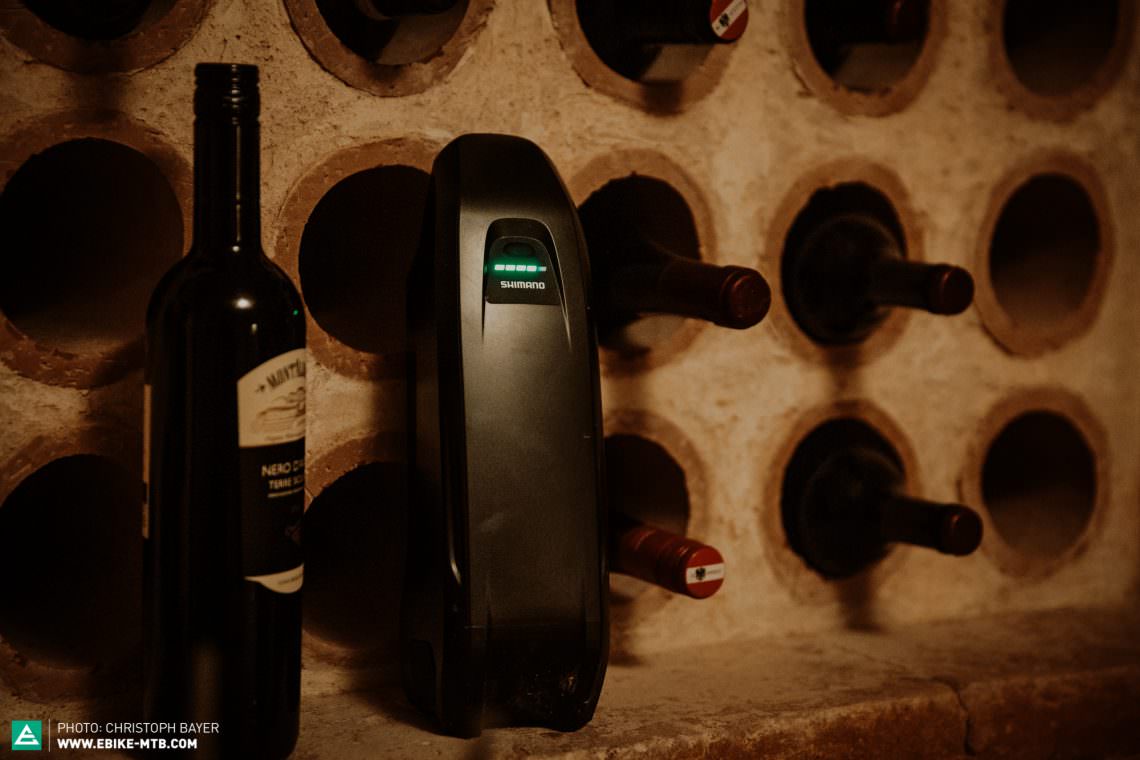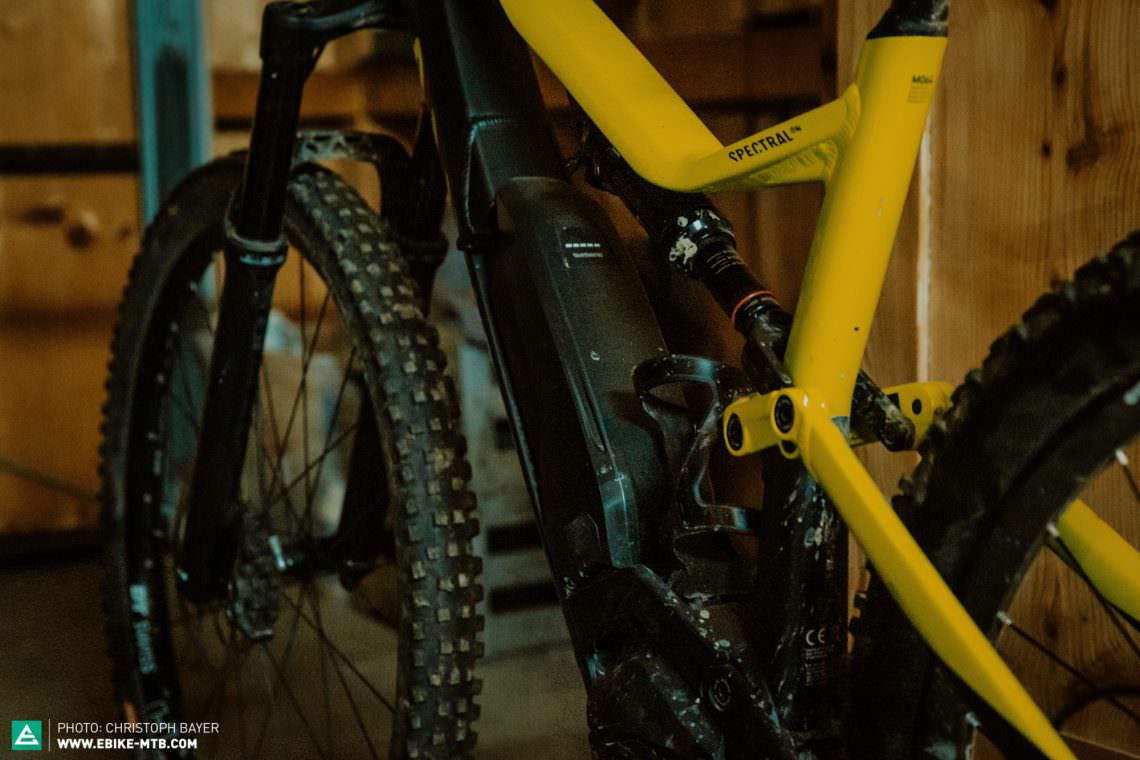They say that sleep is the cousin of death and that holds true for eMTB batteries too. Ill-considered storage can kill this vital and expensive component, so it pays to know the facts! Together with the boffins at Bosch, Shimano and BMZ, we dispel the myths and show you how to safeguard your eMTB battery from the ravages of time.

Why do eMTB batteries deteriorate over time?
As well as depleting its charge whilst riding, modern Lithium-Ion batteries experience a phenomenon known as self-discharge; a gradual but inevitable loss of its stored energy. This self-discharge rate is extremely low (about 1% per month) but, despite its glacial pace, the process has the potential to kill your battery.
When your display informs you that your battery is ‘empty’, your battery management system is really telling you that you have reached the minimum charge level before damage occurs to the cells. To avoid this happening whilst riding or during short term storage, eMTB Li-Ion batteries are designed with discharge protection circuits that ensure that the battery voltage doesn’t drop below this safe, minimum level of charge. However, if stored incorrectly or for too long, the self-discharge phenomenon means that the battery will continue to lose voltage past ‘empty’ but, by now, this discharge is causing irreversible damage to your battery cells. Once the battery has entered this deep discharge state, it finally reaches a point of no-return, where it’s no longer recoverable and officially dead.
For example: a new 504Wh Shimano battery, stored at 100% charge will lose that over 13.6 months of storage. However, when the state of charge (SOC) shows 0%, the battery voltage continues to drop, entering a deep discharge state. At this stage, the unit can still be recovered with a charge within a further 10.7 months but after this period the battery cannot recover.
So from 100% SOC, you can store your new 504Wh Shimano battery for up to 27 months or 2.2 years with no problems. Simply blow off the cobwebs, charge it up and go riding without any issues!

This is obviously a ‘best case’ scenario and discharge rates will vary depending on a range of factors such as battery age or manufacturing quality. Furthermore, in the real world, storing your eMTB battery either completely charged or completely discharged is not recommended. The ideal SOC for lengthy storage periods is between 30% and 70% or two to three LEDs on the battery indicator, depending on the make of your battery.
The good news is that left with the correct SOC and in optimal conditions, eMTB batteries will basically look after themselves, but getting the storage environment right is critical.
What’s the best way to store my eMTB battery?
How you store the unit will affect the rate of discharge. Even short term storage in high or very low temperatures could damage your eMTB battery, so avoid temperatures below -10°C and above 40°C where possible: Shimano warn that even 4 hours in temperature between 40°C and 60°C could have a negative effect on battery life.This could easily happen in the back of your van, conservatory or even in direct sunlight. At the other end of the scale, 20 hours when temperatures hit –20°C could also do irreversible damage.

Your eMTB battery should be stored in a totally dry area, away from combustible material in a temperature of between 0°C and 20°C. All manufacturers agree that the optimum storage temperature is a constant 10°C as the decomposition reactions slow, reducing the battery ageing rate. So break open a bottle from your wine cellar and pop your hibernating battery in the vacant slot to age in an appropriate manner.
Can I leave my eMTB battery on my bike?
If there is any fluctuation in temperature or moisture in the air where you store your bike, you run the risk of corrosion of the battery contacts and terminals. Unless you happen to maintain laboratory conditions in your garage, we recommend removing your eMTB battery from the bike and protecting the contacts from corrosion with a thin layer of terminal grease for any storage duration.
Can I leave my eMTB battery connected to the charger?
The high-quality lithium-ion batteries found on eMTBs have a battery management system that detects potential errors, including overcharge, over-discharge and discharge rate protection. Theoretically, you could leave your battery charging indefinitely, without reducing its life but there is no advantage to doing so and you increase the risk of electrical fires caused by faulty chargers or sockets. Once at 100%, the battery will continue trickle charging, costing you and the environment in wasted electricity.

What should I do when I want to ride my eMTB again?
Even after prolonged storage, such as during the winter, it is completely possible to just plug the battery back on the bike and ride without recharging it. Modern li-ion cells have no memory effect so lithium-ion batteries can be charged at any point in their SOC without causing damage or reducing capacity, regardless of interruptions and charge duration. We recommend a full charging cycle once taken out of hibernation, as this will help the battery management system calibration and calculation of the battery’s capacity.
Nobody wants to stop riding for any length of time but every now and then, life gets in the way and you have to hang up your riding shoes for a while. Keeping your battery stored correctly will let you get back on your eMTB as soon as possible and your eMTB performing at its very best when you get back to it.
This article is from E-MOUNTAINBIKE issue #015
E-MOUNTAINBIKE Magazine is published in a digital app format in both English and German. Download the app for iOS or Android to read all articles on your tablet or smartphone. 100% free!

Did you enjoy this article? If so, we would be stoked if you decide to support us with a monthly contribution. By becoming a supporter of E-MOUNTAINBIKE, you will help secure a sustainable future for high-quality cycling journalism. Click here to learn more.
Words: Thomas Corfield Photos: Christoph Bayer











